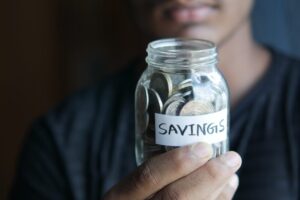
For the past year, financial journals from Bloomberg to Forbes have been proclaiming that high interest rates are here to stay.
Remarks at last week’s annual Jackson Hole Economic Policy Symposium by Federal Reserve Chair Jerome Powell did nothing to refute that idea. In fact, the consensus among investment professionals is that the Fed will likely raise rates again before the end of the year.
Interest rates play a pivotal role in shaping the financial landscape for consumers, influencing borrowing, saving, spending, and overall economic activity. When interest rates are high, they can have both positive and negative effects on consumers’ financial situations.
Here are five ways in which high interest rates can help you, as well as five ways in which they can hurt.
Benefits of High Interest Rates:
Reducing Inflation
This is the primary goal of the Fed’s rate hiking policy. The Fed has raised rates by 5.25 percent since March 2022. Furthermore, Powell has indicated that there might be more of the same in store.
“We are prepared to raise rates further if appropriate, and intend to hold policy at a restrictive level until we are confident that inflation is moving sustainably down toward our objective,” Powell said at the conclusion of the Jackson Hole meeting.
Central banks often raise interest rates to curb inflation. While inflation erodes the purchasing power of money, higher interest rates can help stabilize prices by making borrowing more expensive. This benefits consumers by preserving the value of their money and maintaining a stable cost of living.
Encouraging Savings and Investment
Have you shopped interest rates on high yield savings accounts and certificates of deposit lately? If so, you will have seen figures way above interest paid over the previous decade.
High interest rates on savings accounts, certificates of deposit, and other investment vehicles incentivize consumers to save and invest their money rather than spend it immediately. This can lead to the accumulation of wealth over time. That in turn leads to financial security for the future.
However, rising prices are still foremost in Powell’s mind. Inflation has slowed in the wake of rate hikes. However, Powell is being cautious. He is concerned that consumer spending, which is still running strong, “could put further progress on inflation at risk and could warrant further tightening of monetary policy.”
Stable Retirements
Although high prices affect everyone, retirees are particularly impacted. That is because they live on a fixed income. With high interest rates, retirees relying on investments can generate more substantial returns on their savings. Consequently, they can have a more financially stable retirement. As a result, they are better able to maintain their quality of life.
Discouraging Impulsive Borrowing
Higher interest rates can act as a deterrent against frivolous borrowing, encouraging consumers to think twice before taking on debt for unnecessary purchases. This can promote responsible financial behavior and reduce the risk of accumulating unmanageable levels of debt.
Attracting Foreign Investment
Just like you, foreign investors are attracted to investments offering a high return. As a result, high interest rates attract international investment.
More foreign investment makes the dollar stronger. As a result, imported goods become cheaper. That can lead to more products across a wider array of categories entering the domestic market.
Drawbacks of High Interest Rates:
Increased Borrowing Costs
One of the most direct negative impacts of high interest rates is the elevated cost of borrowing.
If you are looking to purchase homes, cars, or fund education you may find it is more expensive to borrow money. That leads to higher monthly payments. In turn, that can limit your ability to make significant purchases.
Reduced Disposable Income
Increased interest payments on the purchases you finance leaves less money in your pocket. After all, your income probably does not rise with interest rates. As a result, you have less disposable income. That means you have to cut other expenses.
For some, cutting costs may mean fewer dinners out. However, for those living paycheck-to-paycheck, it may mean more dire cuts, such as putting off car repairs or even medical treatments.
Dampened Economic Growth
High interest rates can slow economic growth. Businesses that had planned an expansion might change those plans because they can not afford the higher cost of borrowing.
In addition, normal costs of operations from utilities, goods for sale and supplies may rise with increased interest rates. Ultimately, that can lead to job cuts and reduced income growth.
Strain on Existing Debt
If you are carrying substantial debt, you may struggle even more under high rates. The increased interest on existing loans, such as credit card balances and personal loans, can increase your financial difficulties and potentially lead to defaults.
Limited Access to Credit
Banks and other lending institutions are making it harder to get loans as a result of high interest rates. As a result, fewer loans are being approved.
Those suffering the most as a result of lending restrictions are people with a bad or limited credit history.
High interest rates are a double-edged sword. They can encourage responsible financial behavior, savings, and investment. However, they can also increase the cost of borrowing, reduce economic growth, and place strains on your finances.
Read More:
Come back to what you love! Dollardig.com is the most reliable cash-back site on the web. Just sign up, click, shop, and get full cashback!

Max K. Erkiletian began writing for newspapers while still in high school. He went on to become an award-winning journalist and co-founder of the print magazine Free Bird. He has written for a wide range of regional and national publications as well as many on-line publications. That has afforded him the opportunity to interview a variety of prominent figures from former Chairman of the Federal Reserve Bank Paul Volker to Blues musicians Muddy Waters and B. B. King. Max lives in Springfield, MO with his wife Karen and their cat – Pudge. He spends as much time as possible with his kids, grandchildren, and great-grandchildren.
Comments